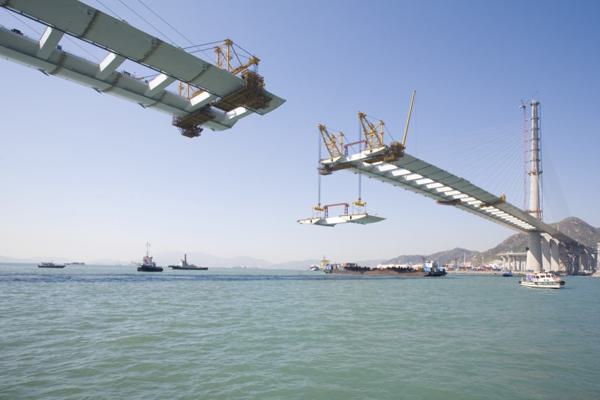What Are the Applications of Building Material Tests in Bridge Engineering?
Bridges aren’t just structures—they’re lifelines connecting communities, economies, and infrastructure networks. And the key to their long-term safety and reliability lies in rigorous material testing1. From selecting materials for new spans to maintaining aging structures, building material tests are essential at every stage of a bridge’s life cycle2. Here’s how they’re applied in the field of bridge engineering.
Load-Bearing Capacity Tests for Bridge Construction Materials
Bridges endure constant and heavy loads—from speeding vehicles to temperature-induced stress. Therefore, materials used in bridge construction must be tested for their load-bearing capacity and structural performance3 under various forces.
Critical Tests:
- Compressive Strength (ASTM C39): For concrete in piers, decks, and abutments.
- Tensile and Yield Strength (ASTM E8): For steel components in girders and cables.
- Flexural Strength (ASTM C78): For bridge decks and pavement slabs.
- Modulus of Elasticity (ASTM C469): To assess material deformation under load.
| Vật liệu | Bài kiểm tra | Mục đích |
|---|---|---|
| Bê tông | Compressive & flexural strength | Ensures support under static and dynamic loads |
| Steel | Yield & tensile strength | Confirms resistance to pulling and bending |
| Reinforcement | Bond and anchorage tests | Validates load transfer and anchoring efficiency |
These tests help engineers design bridges that are structurally sound and compliant with national codes, even under extreme stress.

Corrosion Resistance Testing of Bridge Metallic Components
Metallic components in bridges—like rebars, bearings, and steel cables—are constantly exposed to moisture, de-icing salts, and pollutants4, all of which accelerate corrosion. Testing their resistance to corrosion is critical for ensuring long-term durability5.
Common Corrosion Tests:
- Salt Spray Test (ASTM B117): Simulates chloride-rich environments.
- Electrochemical Impedance Spectroscopy (EIS): Measures coating protection performance.
- Accelerated Weathering (ASTM G154): Evaluates metal degradation over time.
- pH and chloride content in concrete (ASTM C1218): Assesses rebar corrosion potential.
| Thành phần | Loại thử nghiệm | Tại sao nó lại quan trọng |
|---|---|---|
| Steel girders | Salt spray and coating tests | Prevents premature failure due to rust |
| Reinforced concrete | Chloride penetration | Ensures embedded steel remains protected |
| Expansion joints | Galvanization verification | Maintains mobility and load transfer integrity |
Corrosion-related failures are among the leading causes of bridge degradation—testing helps stop that before it starts.

Fatigue Testing for Bridge Pavement Materials
Bridge pavements face repeated cyclic loading6 from traffic, especially heavy trucks. Fatigue testing determines how long pavement materials can withstand such repeated stress without cracking or failing.
Key Fatigue Tests:
- Four-Point Bending Fatigue Test (AASHTO T321): Evaluates asphalt fatigue life.
- Repeated Load Triaxial Test (AASHTO T307): Assesses subbase and subgrade materials.
- Dynamic Modulus Test (AASHTO TP62): Measures stiffness of hot mix asphalt under varying temperatures and loads.
| Pavement Layer | Fatigue Test | Measured Outcome |
|---|---|---|
| Asphalt surface | Bending fatigue | Crack resistance and expected lifespan |
| Base/subbase layer | Triaxial fatigue | Rutting potential under traffic load |
| Jointed concrete slabs | Load transfer efficiency | Stress durability under wheel load |
Fatigue testing helps optimize pavement mix designs and predict failure modes, which are crucial for bridge safety and life extension.

Safety-Related Material Tests in Bridge Maintenance
Ongoing bridge safety depends on regular inspections and testing of materials used in repairs, reinforcements, and retrofits. Maintenance testing detects degradation early and ensures safety interventions are effective.
Maintenance-Focused Tests:
- Rebound Hammer Test (ASTM C805): Evaluates surface hardness of aging concrete.
- Core Sampling & Petrographic Analysis: Detects cracks, voids, or chemical deterioration.
- NDT Methods (Ultrasound, GPR, Magnetic Particle Testing): Locates hidden damage in structural components.
- Slip Resistance and Skid Testing: For pedestrian walkways and vehicle decks.
| Maintenance Area | Phương pháp kiểm tra | Maintenance Impact |
|---|---|---|
| Concrete deterioration | Core analysis, rebound hammer | Identifies need for resurfacing or grouting |
| Bearing support systems | Ultrasonic flaw detection | Ensures safe load transfer and mobility |
| Pavement wear | Skid resistance test | Reduces accident risk from slippery surfaces |
These tests allow for data-driven maintenance decisions, reducing both risk and cost over the bridge’s service life.

Phần kết luận
In bridge engineering, material testing isn’t just about compliance—it’s about life safety, durability, and economic sustainability7. Whether you’re constructing a new bridge or preserving a century-old span, targeted material tests provide the evidence needed to build smart, maintain wisely, and protect lives8 for generations to come.
-
Understanding rigorous material testing is crucial for ensuring the safety and longevity of bridges. Explore this link to learn more about its importance. ↩
-
Discover why building material tests are vital throughout a bridge’s life cycle to ensure structural integrity and safety. ↩
-
Understanding these concepts is crucial for ensuring the safety and longevity of bridges. Explore this link to learn more about their importance. ↩
-
Understanding these effects can help in developing better protective measures for bridge components, ensuring their longevity. ↩
-
Exploring strategies for long-term durability can lead to improved maintenance practices and safer infrastructure. ↩
-
Understanding repeated cyclic loading is crucial for improving pavement durability and performance under traffic stress. ↩
-
Understanding these factors is crucial for ensuring safe and sustainable bridge construction and maintenance. ↩
-
Exploring this topic can provide insights into best practices for bridge construction and maintenance that prioritize safety and longevity. ↩








